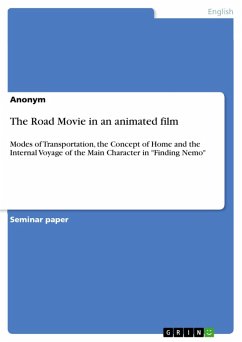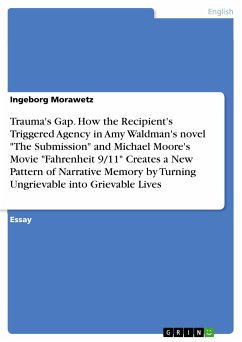Seminar paper from the year 2006 in the subject American Studies - Literature, grade: 1,3, University of Erfurt (Anglistik), course: Vom Buch zum Film: Steinbecks "The Grapes of Wrath", language: English, abstract: In 1936 Steinbeck was commissioned by a San Francisco newspaper to write a series of articles about the migrant farmers who had lost the land they had worked on in the region of the Dust Bowl and who therefore came to California to find work and to start a new life. Steinbeck travelled to the region and witnessed the hardships those farmers had to endure with his own eyes. He was deeply moved by their fate and wanted to help them. Interestingly, he decided that instead of writing newspaper articles about them, he was going to write a novel. Steinbeck thus chose a fictional medium over a documentary one to inform the public about a highly topical subject. His novel The Grapes of Wrath was made into a film only one year after it had been published in 1939. The movie, which carried the same title, was immensely successful and won the director John Ford an Oscar Award. Thus Steinbeck succeeded in drawing attention to the hard lot of the migrant farmers. "What becomes of history?" is the first part of the title for my paper. I take this to refer to the relationship between historical reality and its depictions in literary an cinematic works of art (and not to a mere tracing of historical details in an otherwise fictional piece of art). I think I am justified in doing so, because that seems to be the striking particularity of the book's creation: Steinbeck obviously thought the novel, which is usually associated with fiction, to be a better medium to convey historical reality than a classical medium of documentary nature like a news article in a newspaper. The same particularity applies to the movie, which is not a documentary. Since success proved both, Steinbeck and Ford, right, the interesting question is: How and why can works of art convey historical reality and how is this done in the movie The Grapes of Wrath? In order to answer this question, I will briefly recount in the first chapter the historical events Steinbeck's book and Ford's movie are based on. I will then proceed in the second chapter to give a summary of the plot of the movie that is set in the historical reality described in the first chapter. Also in the second chapter, there will be an analysis of the movie in terms of saga and then epic saga as well as a discussion of how its main theme human endurance is borne out. [...]
Dieser Download kann aus rechtlichen Gründen nur mit Rechnungsadresse in A, B, BG, CY, CZ, D, DK, EW, E, FIN, F, GR, HR, H, IRL, I, LT, L, LR, M, NL, PL, P, R, S, SLO, SK ausgeliefert werden.









